Nature » Animated nature » Plant communities
Plant Communities of the MNP
The forecrop forests, growing on former arable lands, are represented by the woods with grey alder, multispecies deciduous forests and mixed and coniferous (mainly pine) stands.
The natural shrub communities can be found on the riverine gravel-banks. These are osier beds Salicetum triandro – Viminalis and shrubs with false tamarisk Myricaria germanice – Salix. On the inner-forest mires wet shrubs with eared willow Chaerophyllum hirsutum – Salix aurita grow quite often. Also the shrubs and tree stands grown of self-sown plants on unused farmlands (fallows, meadows and pastures) are rather popular.
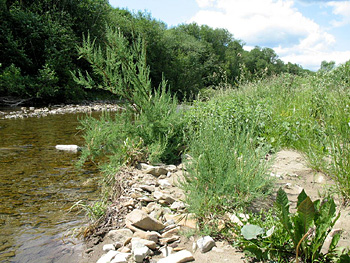
Shrubs with Tamarisk Myricaria germanica on the Wisloka river (phot. Jaroslaw Sochacki)
Non-forest vegetation is much more phytosociologically diversified then shrubs and forests. In the territory of the Magura National Park 34 typical associations or communities in similar rank belonging to 6 phytosociological classes were found.
Fen communities occur in the form of small patches dispersed along the river flood terraces, drainage ditches and on small ponds. The following communities from this group were observed: Phragmitetum communis, Typhetum latifoliae, Caricetum gracilis, Caricetum rostratae, Caricetum vulpinae, Phalaridetum arundinaceae, Equisetetum limosii and two communities of Glycerietum maximae .
The associations of wet meadows and herb communities are also very numerous. In the river and stream valleys the moist meadow Cirsietum rivularis cover quite large areas. While diverse meadow herb communities (eg. Filipendulo – Geranietum, Scirpetum sylvatici, and Epilobio – Juncetum effusi) are observed as small patches.
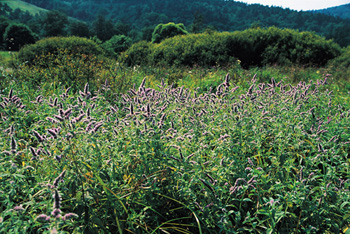
Herb meadow with mint Mentha longifolia (phot. Stefan Michalik)
The intermediate peatbog vegetation is represented by the mire Valeriano – Caricetum flavae. On the streams and the inner-forest mires the mountain herb communities Petasitetum hybridi, Petasitetum albi, with giant horsetail and with marsh marigold are observed.
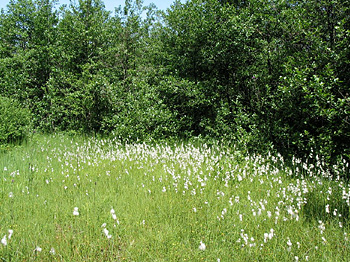
Mire Valeriano – Caricetum flavae (phot. Jaroslaw Sochacki)
Meadows and fresh pastures are the most widespread non-forest communities. They are represented by: hay-growing meadow Arrhenatheretum medioeuropaeum, meadow Gladiolo – Agrostietum and pasture Lolio – Cynosuretum.
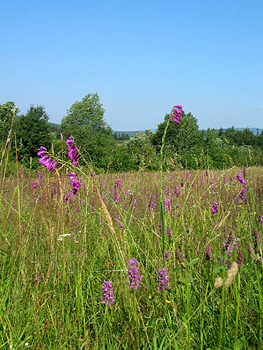
Meadow Gladiolo – Agrostietum (phot. Jaroslaw Sochacki)
Quite large areas are covered with heathland communities and poor grasslands Calluno - Nardetum.
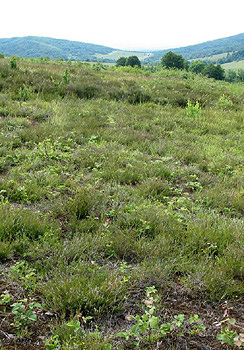
Poor grassland Calluno - Nardetum (phot. Jaroslaw Sochacki)
There is also a separate group of synanthrophic communities, among which the new described association Centaureetum mollis from the Magura National Park deserves special attention. It occurs in place of former orthodox churches, old graveyards and former villages and is characteristic for the region once inhabited by the Lemko and Bojko people.
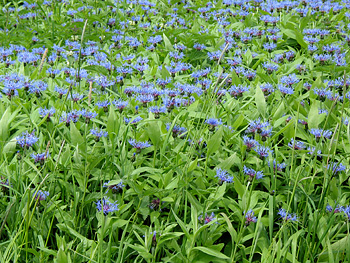
Centaurea mollis (phot. Joanna Pawelec)


